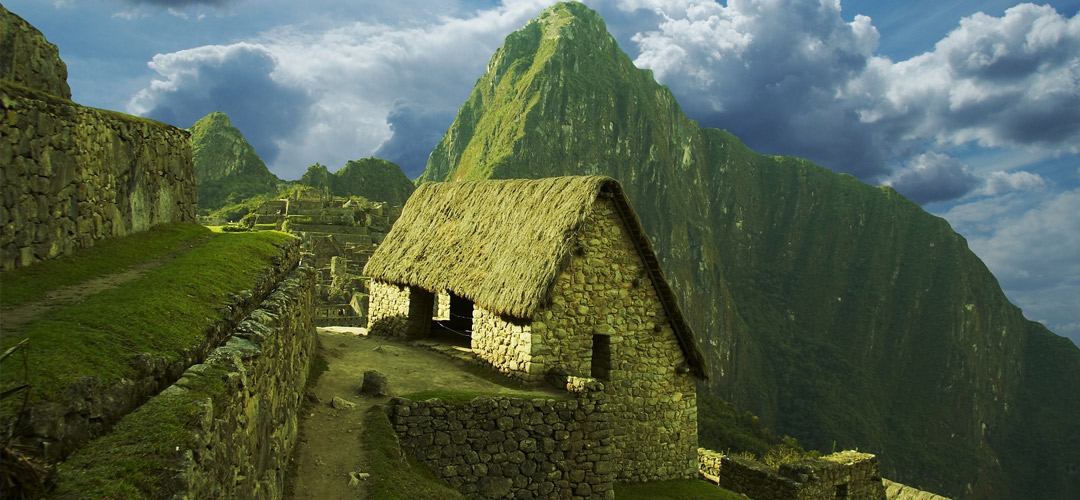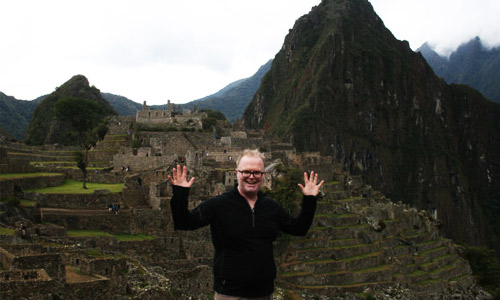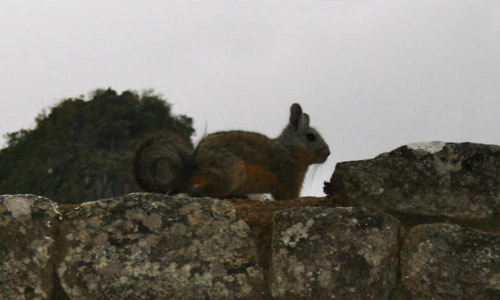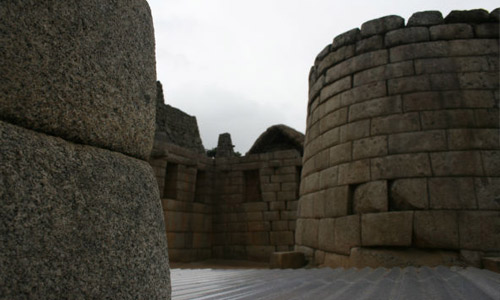Peru’s Sacred Valley reveals its Earth Mother

Brian Crisp pays tribute to the Earth Mother in Peru’s Sacred Valley
IT IS early morning and I’m sitting under a tree by a river in Peru’s Sacred Valley with Lucas Checa. He is a paq’o. A holy man. A healer. An Andean shaman.
In his late 50s, Lucas stands about 160cm. His grey hair is in plaits, his skin weathered from the high-altitude sun and his voice is soft, almost hypnotic. He speaks no English, only Quechua, which is the Incan language, but I find myself hanging on his every word.

My guide, Juan Carlos, translates as Lucas explains that we are about to make an offering to the Earth Mother. The ritual is called Pago a la Madre Tierra, which translates to Payment to Mother Earth. It is a way of thanking the Earth Mother for what we already have received in life, sharing our good fortune with her and asking her for help in the future.
Peruvians use this ritual a lot. Locals ask paq’os like Lucas to perform this ceremony to help them find a partner, or to ask Earth Mother to make sure the building of their home goes well. Some use it to assist them with their university studies. Others employ it against enemies.
Today Lucas is asking Earth Mother to ensure that I have a safe journey home.
Meeting the Paq’o
Paq’os are fast becoming a tourist attraction. There are already at least 100 of them in Cusco, which is one of Peru’s most sacred towns.
Our ceremony starts with a ritual cleansing. Lucas then prepares the gifts for Earth Mother. The gifts, which seem to an outsider like me a very eclectic collection of things, are set out on a multi-coloured blanket.
Lucas says that these gifts are the things the Earth Mother likes most. They include Oreos; llama fat; moss; a starfish; coca beans and leaves; magnets in different colours representing the rainbow; corn; corn beer; kiwicha (a high-protein cereal); lima beans; chickpeas; huayruro seeds and alpaca hair.
There are two candy houses that represent my safe journey home. The offering also includes my breath which, after praying for what I want, is blown on to a fan of three coca leaves that represent the Inca worlds. This is called k’intu.
With the exception of the corn beer that is poured on to the ground, all these things are bundled together in gift-wrapping paper and tied with yellow and white cotton, the colours of the Vatican.
Peruvian religion is often a mixture of Catholicism and Incan beliefs.
Lucas doesn’t burn the offering in front of me. He will do that at home later in the evening after he has established the right connection with Earth Mother. To do this he will need to drink alcohol, smoke cigarettes and chew some coca leaves.
When he feels he has reached a certain state of enlightenment, he will burn the offering.
Gifts from the Paq’o
The 50-minute ceremony ends when Lucas hands me a gift a silver piece of jewellery that has a huayruro seed in the centre. As he pins this gift to my shirt he hugs me. It is a warm, loving hug, not that of a stranger, and for reasons I can’t explain it brings me to tears.
Peru’s Sacred Valley, also known as the Urubamba Valley, follows the Vilcanota River and sits at 2700m. It is a good base to acclimatise before heading higher, and is an hour’s drive from Cusco Airport, the main access point to the region. The valley is green and lush, good for growing produce, and serves as the market garden for the more congested city of Cusco. It’s bordered at one end by Ollantaytambo a former Inca strategic military post and Pisac.
Peru’s Sacred Valley is a poor part of the world, but not without some luxuries and my tour organiser, Abercrombie & Kent, always has the keys to the best accommodation options. I am staying at the Hotel Rio Sagrado, part of the Orient-Express chain.
The hotel is a welcome surprise and a luxurious contrast to the rest of the region. It is on the side of a hill overlooking the Vilcanota river and mountains and offers the level of service and quality you’d expect from the Orient-Express brand.
There are no televisions in the room, and the wi-fi doesn’t work very well, with only one hour’s connection during my two-night stay.
Thankfully I was able to find a peaceful spot under a tree to sit and read a good book. The grounds are a delight.
The hotel is centrally located to explore the Sacred Valley. First stop for Juan Carlos and I is Moray, an archeological site just outside the small town of Maras.
Homes of the Incas
In basic terms, the Incas used the site as a giant outdoor fruit and vegie science experiment. They created a series of enormous terraced circles that rise almost 150m from top to bottom. The soil temperature on each terrace differed, allowing the Incas to work out what plants would grow in varying climate conditions. Ingenious.
From the site, we headed back to the village where the locals, knee deep in mud and grass, were making house bricks. The village looks as if it hasn’t changed in hundreds of years except for satellite dishes and the odd Coca-Cola sign. Life here seems without complexity.
All the towns in this part of the world have a similar feel.
Chinchero, known as a town of Inca origins, is slightly bigger and when we arrive on the traditional market day the town is buzzing. Meat and vegetables are being traded. Some locals have gathered at the bar drinking corn beer and a shot of white spirits that I’m told is actually metho. It’s still morning but already some are drunk. Happy drunks.
Tourists haggle over the price of handmade rugs, beanies and bags. As in all markets, you get what you pay for. Chinchero is famous for its weaving so if you want the good products, you should bypass the market and head to The Centre for Traditional Textiles of Cusco in the main street of the village. Here you can watch women make the most amazing rugs and buy directly. Some of these products take up to six months to make.
Wall of Six
On the next day we travel to the fortress of Ollantaytambo. This imposing stone structure rises in terraces to the top of a high peak. Juan Carlos shows me how the Incas used elements of this fortress to tell the time and how the sun’s position on a nearby mountain was used to plot the months of the calendar.
When you see the size of the rocks used to build the Wall of the Six Monoliths you can only wonder at how the Incas managed to move these giant stones not just into place but from the river bed up a mountain.
It was here that the Incas had a “momentary” victory over the invading Spanish. Today it is often used as the starting point for the four-night Inca Trail walk.
Next stop Machu Picchu. I hope my paq’o’s blessing for safe travel works.



